18 skiing tips for beginners
Our 18 skiing tips make sure you don’t end up hating skiing before you have a chance to love it, and keep you safe and comfortable on the slopes
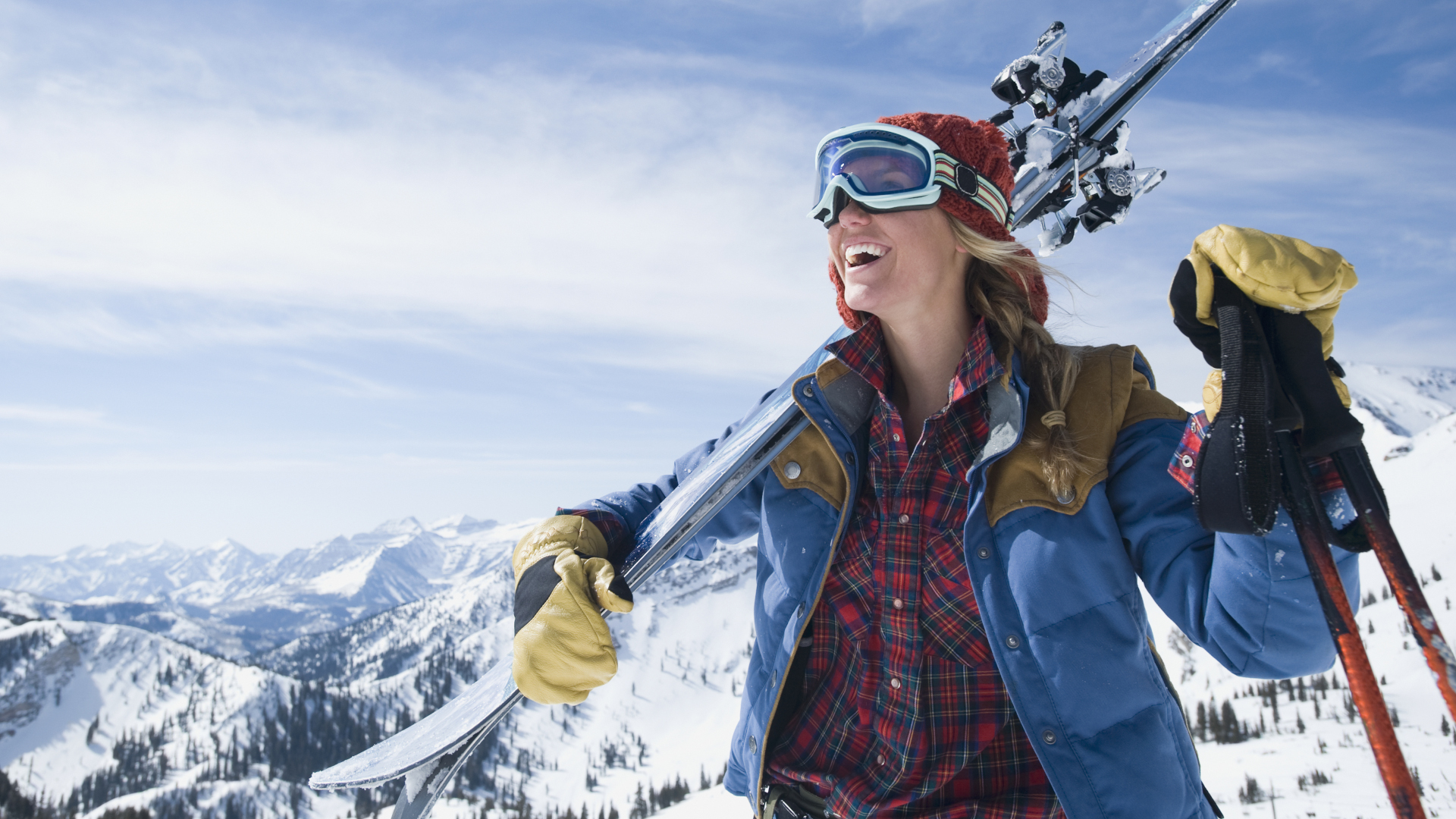
Last winter, I happened to be up in the Scottish Highlands when a rare powder day hit. Never one to miss the opportunity to ski, I raced to the nearest resort and got in line for some ski rentals. I was not the only person to have this idea, so after over an hour of waiting in very cold, humid Scottish weather, I was riding the chairlift up Ben Nevis. Ahead of me were the young couple who had been queuing ahead of me waiting for a ski setup for her. They got off the lift and stood at the top, looking a little unsure. I zoomed off downhill to get some freshies, and hopped back on the lift ready for round two. The couple were still there when I reached the top. By my third lap, she was slowly hiking down the mountain in her ski boots and he was skiing but carrying her skis over his shoulder. They did not look like they were having a good time.
Skiing is one of the most fun ways to spend a snow day if you happen to be near mountains, but there are so many factors for a new skier that can quickly ruin your day, from not dressing correctly to not knowing how to size your boots and then there’s trying to ski difficult terrain or conditions which aren’t appropriate for a beginner. So that you don't end up hating skiing before you have a chance to love it, or looking like Bridget Jones in The Edge of Reason, read these 18 skiing tips for beginners that will help you stay safe and comfortable on the slopes all while refining your skills.
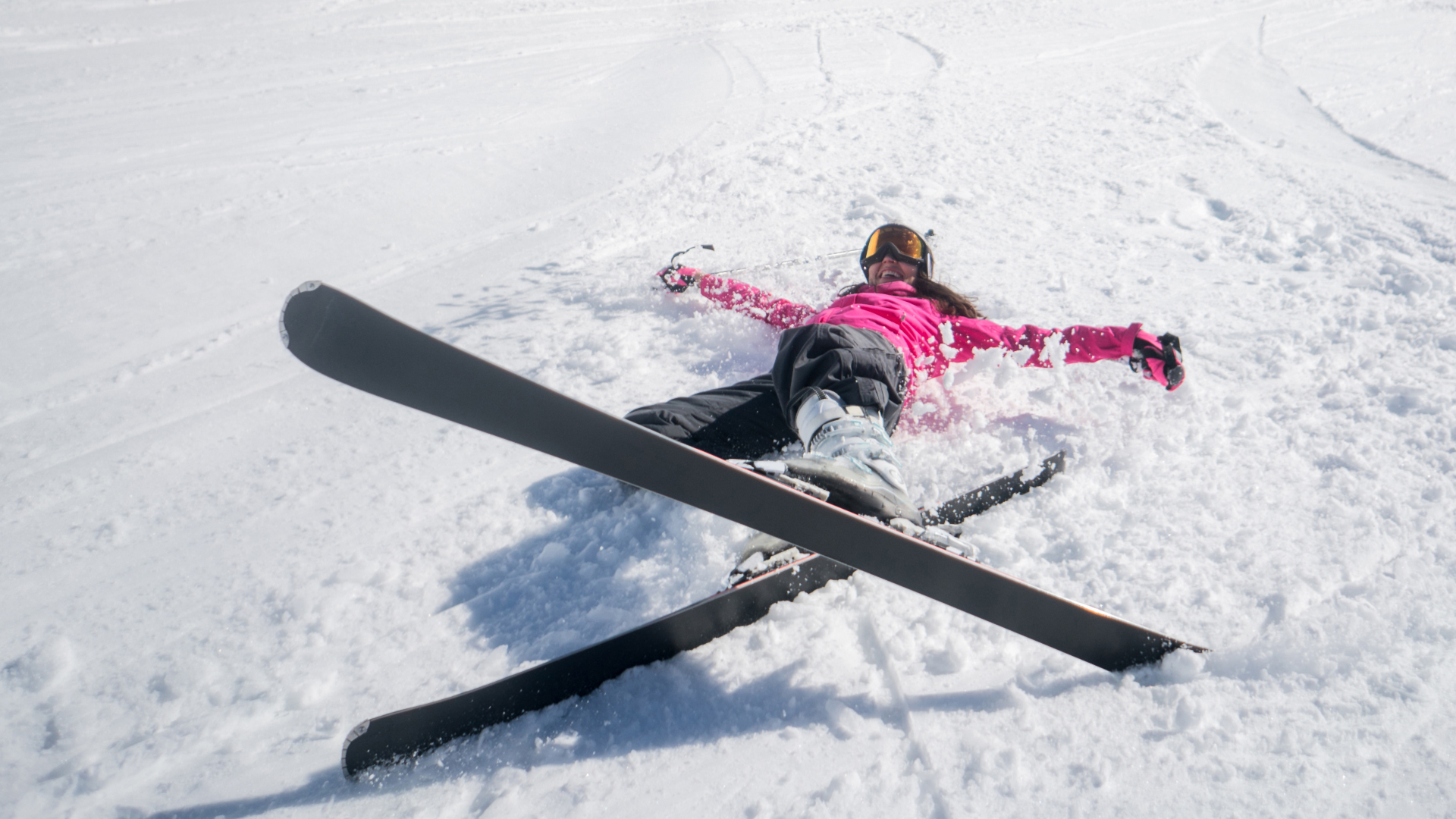
1. Rent gear before you buy
Skiing gear doesn’t exactly come cheap and there’s no two ways about it – you’ll need skis, boots, poles, ski goggles, a helmet and winter clothing to get started. Before you go all in, rent a setup to make sure you actually like it and to help you figure out what sizes you need in everything. Lots of ski rental shops will offer a setup for a few days or a week for far cheaper than you can buy them, and if you have any problems such as your boots being too big or your skis too long, you can just head right back to the shop and switch them out till you find the perfect fit.
2. Take a lesson
People definitely do just boot up and head out on the slopes and try to figure out how to ski – in fact, there are whole social media accounts dedicated to documenting their hilarious and often terrifying mishaps. However, we recommend not becoming the subject of one of their posts and forking out for a lesson. Just a half day with an instructor is enough to cover the skiing basics you need to get started, such as:
- How to get your skis on and off.
- How to slow down, turn and stop on skis.
- How to load and unload the chairlift safely.
- How to get up after falling on skis.
Once you’ve got these skiing skills dialed, you can definitely expect to be comfortably exploring beginner runs by yourself.
Ski lessons can be really pricey, however, so it’s no wonder that people get turned off. Save money with group classes instead of individual lessons, try smaller, family-run resorts and look for weekly skier clinics which might save you some money. Once you get comfortable and start skiing intermediate and advanced runs, it can be good to take another skills-based lesson.
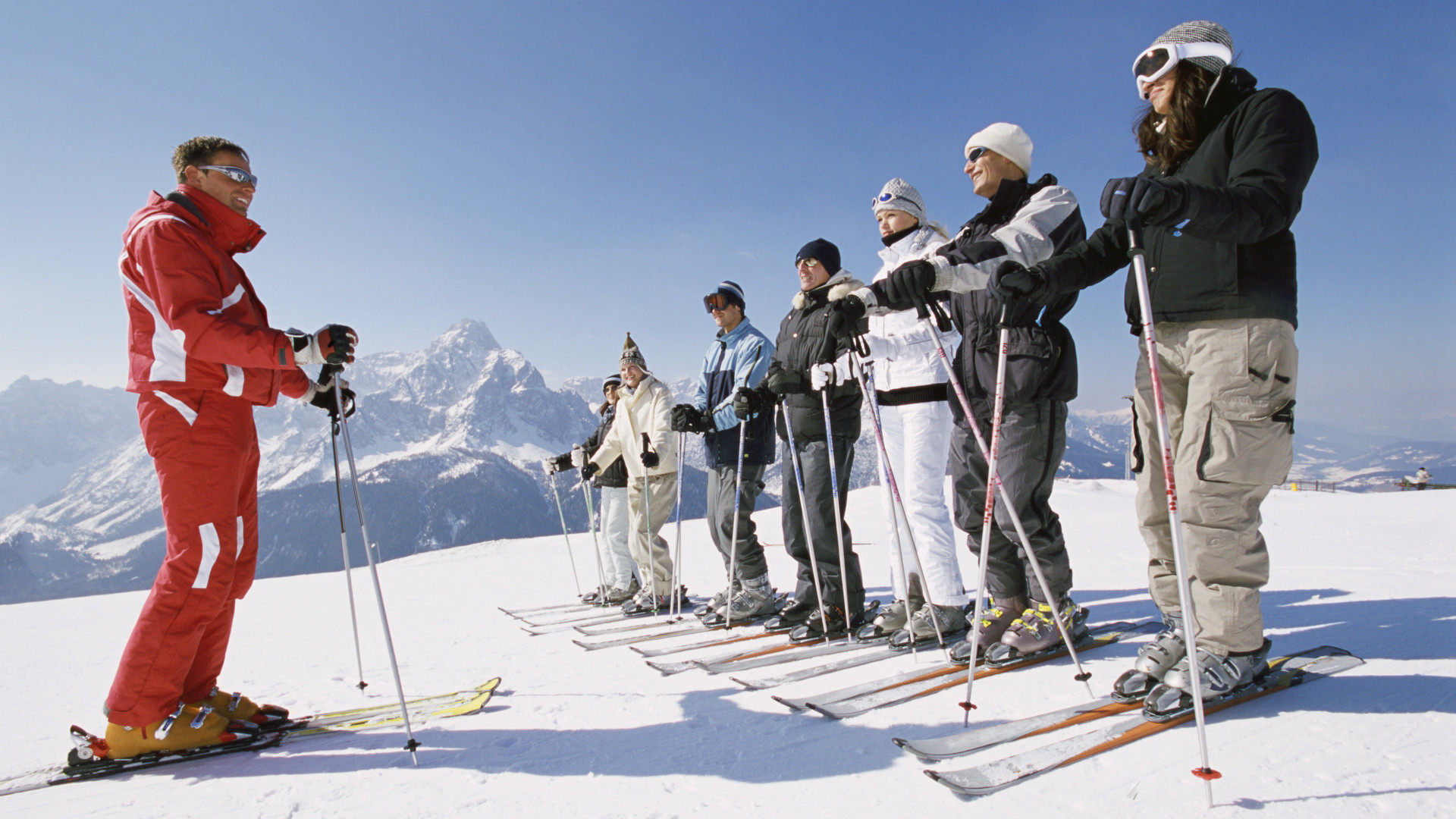
3. Know the code
In the state of Colorado alone, up to 55 injured skiers and snowboarders end up in the emergency room every day of the season, according to the Colorado Sun. It’s vital that you read up on – and understand – skier safety so you know your responsibilities as a skier. Skiers in front of you always have the right of way and you should never stop where skiers above you won’t be able to see you.
Advnture Newsletter
All the latest inspiration, tips and guides to help you plan your next Advnture!
4. Dress like a pro
Dressing for skiing is an exact science and it doesn’t involve simply wearing all of your warmest, thickest winter clothes. Yes, you want to stay warm, but you also need to be able to move and you need to be able to stay dry if you get sweaty. Once you get good at skiing, it’s quite effortless, but in the beginning all that falling down and getting up again is hard work, so you need to be dressed in breathable layers to let moisture out and trap warm air against your skin. To get started, you’ll require the following:
- Ski socks made from merino wool or another sweat-wicking fabric, with padding (no cotton!).
- Insulated ski pants with zipped leg vents.
- A long sleeved base layer.
- Either an insulated, weather-proof ski jacket or layer a ski shell over a fleece jacket – learn more about the pros and cons of a shell vs insulated ski jacket.
- Ski gloves that are water-resistant or waterproof.
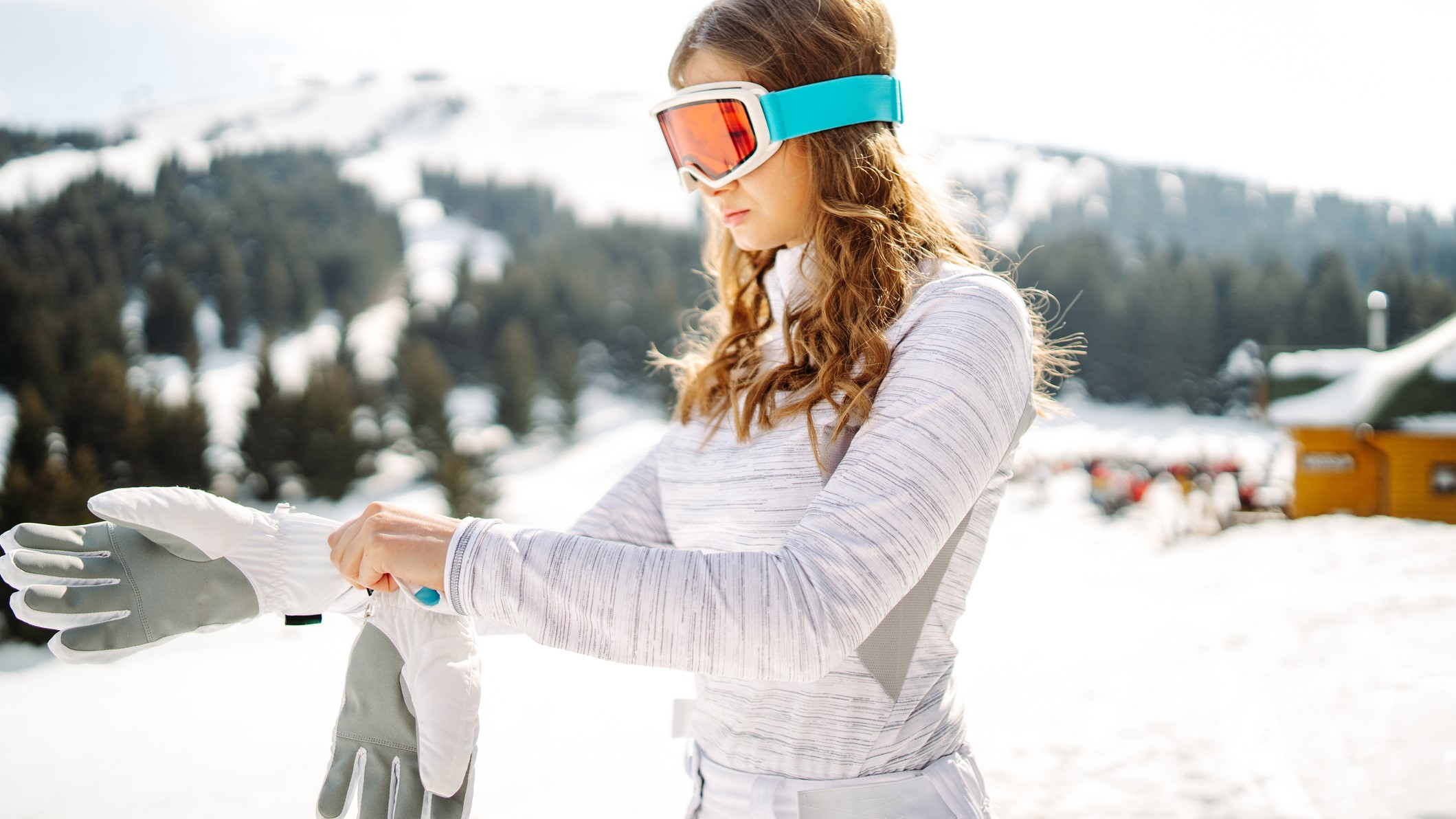
5. Check the mountain forecast and conditions
Head to the website of the resort you plan to ski for up-to-date details on the mountain conditions that day. You’ll be able to find details such as how much snow fell in the past 24 hours as well as the temperatures and wind speeds at the top of the hill – these can be vastly different from what’s happening down in the village. High wind can mean lots of closed chairlifts, deep snow can be difficult for new skiers, and very cold temperatures will mean you’ll want to bring a ski mask and possibly wear long johns, or even skip skiing today and go snowshoeing or try a yoga class instead.
6. Wear comfy shoes to the slopes
Even well-fitting ski boots are pretty uncomfortable when you’re not used to wearing them, and you're likely to having achey feet by last chair. Make sure you wear comfortable shoes to the slopes and bring an extra pair of socks to change back into when you've finished skiing. Forget the fashion shoes and think trainers, moccasins or sheepskin boots, even if you’re going out for a fancy dinner – remember, mountain casual reigns supreme everywhere in a ski town.
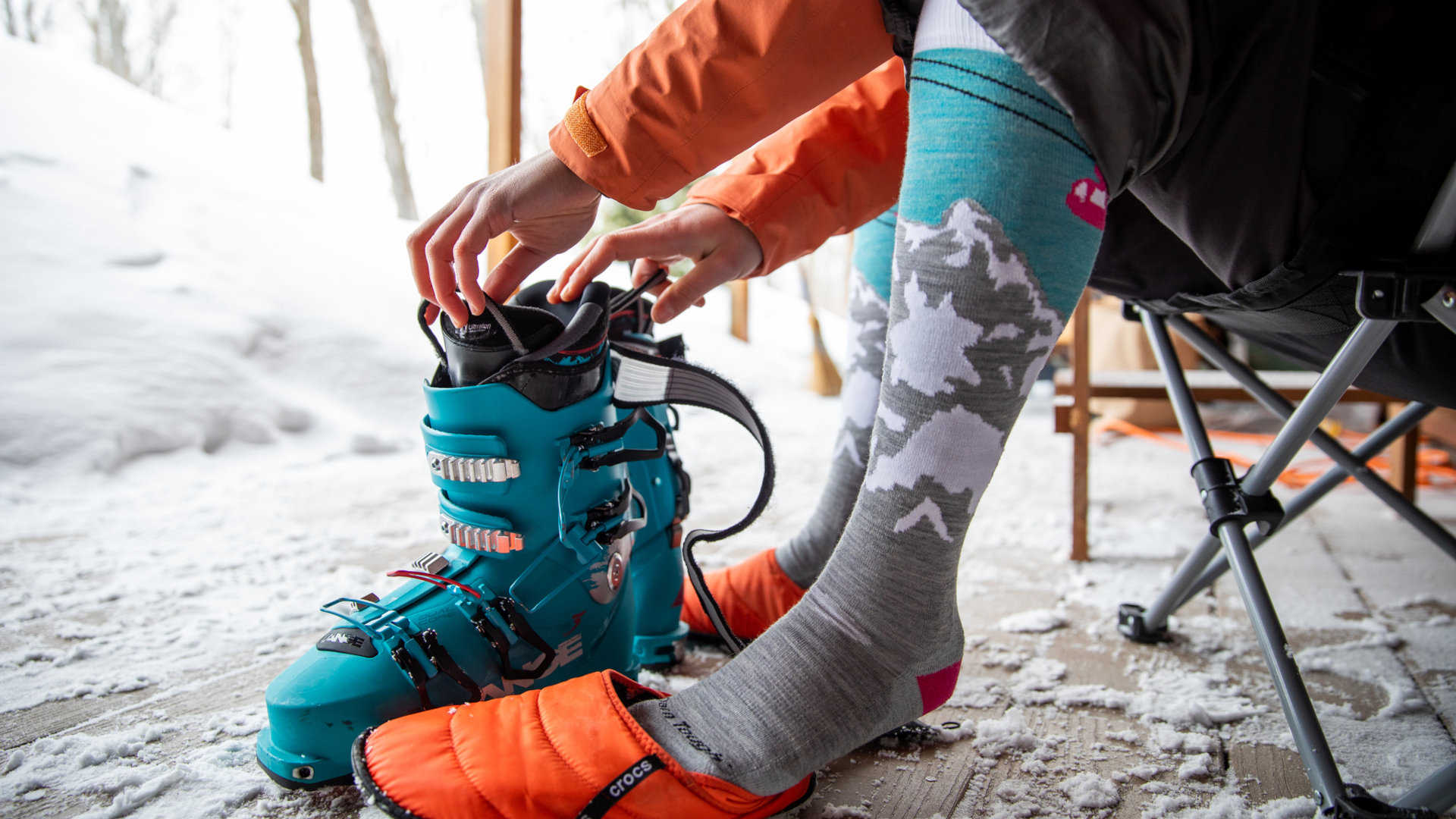
7. Buckle, wiggle and unbuckle
Speaking of your feet, one of the main complaints among new skiers is intolerably cold feet. Wearing wool ski socks definitely helps, but how you buckle your boots matters too. Don’t over tighten the lower buckles on your boots, as this can cut off your circulation. Make sure you can wiggle your toes and do so when you’re on the ski lift to keep the blood flowing. Unbuckle your boots whenever you stop for lunch or a sit down break.
8. Ditch the backpack
It might be tempting to load up your hiking backpack with a water bottle, snacks and extra layers, but backpacks are a nightmare on the ski lift if you’re a new skier – and can be annoying for skiers next to you even if you’re an experienced skier and trying to pull it off and place it in your lap while they’re trying to pull the bar down. Use the pockets in your ski jacket for snacks, gloves and your phone, and use the on-mountain lodges and dining for frequent, free water breaks.
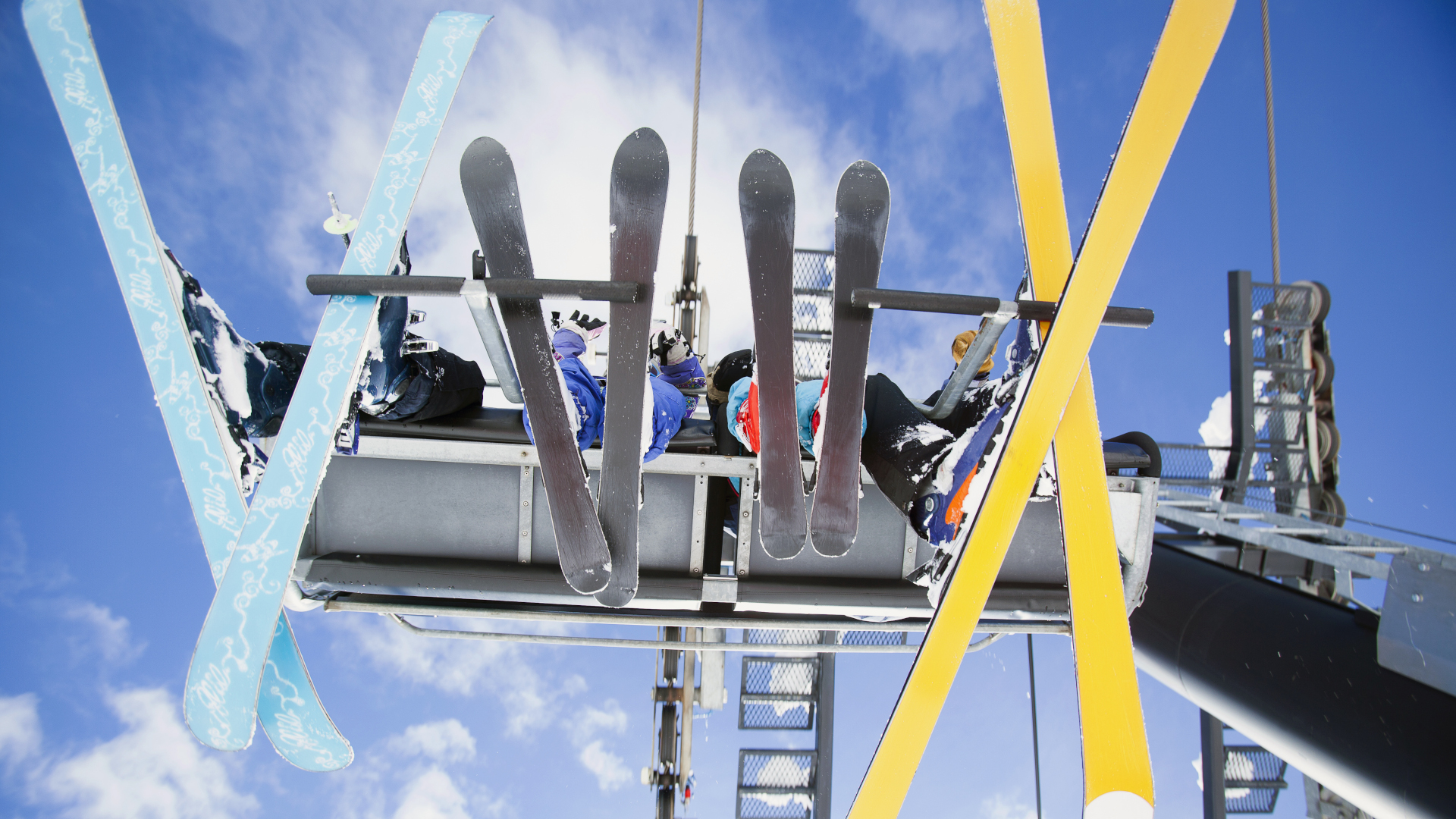
9. Have your ski pass handy
Don't be frantically rooting around for your ski pass every time you make it to the front of the queue for the lift. Most lift ticket and ski pass scanners will work through your clothing, but the smoothest way to get on a chairlift is to make sure you carry yours somewhere easy to find like the chest pocket of your ski jacket. The ticket scanners will probably aim their machines there anyway, but you can always just point to show them where it is.
10. Get comfortable riding the chairlift
Your ski instructor will teach you how to load and unload a chairlift without falling, but remember some of these tips once you get comfortable:
- Free your hands from the wrist straps of your poles before loading the chairlift.
- Slide your poles, handle first, under your thigh as you sit down so they’re secure.
- Communicate with your lift companions to make sure you pull the bar down promptly without hitting anyone in the head or crotch, and to lift the bar in time to unload.
- Rest your skis on the foot rest provided while you’re on the lift so you don’t accidentally kick off a ski, and to help with circulation in your feet.
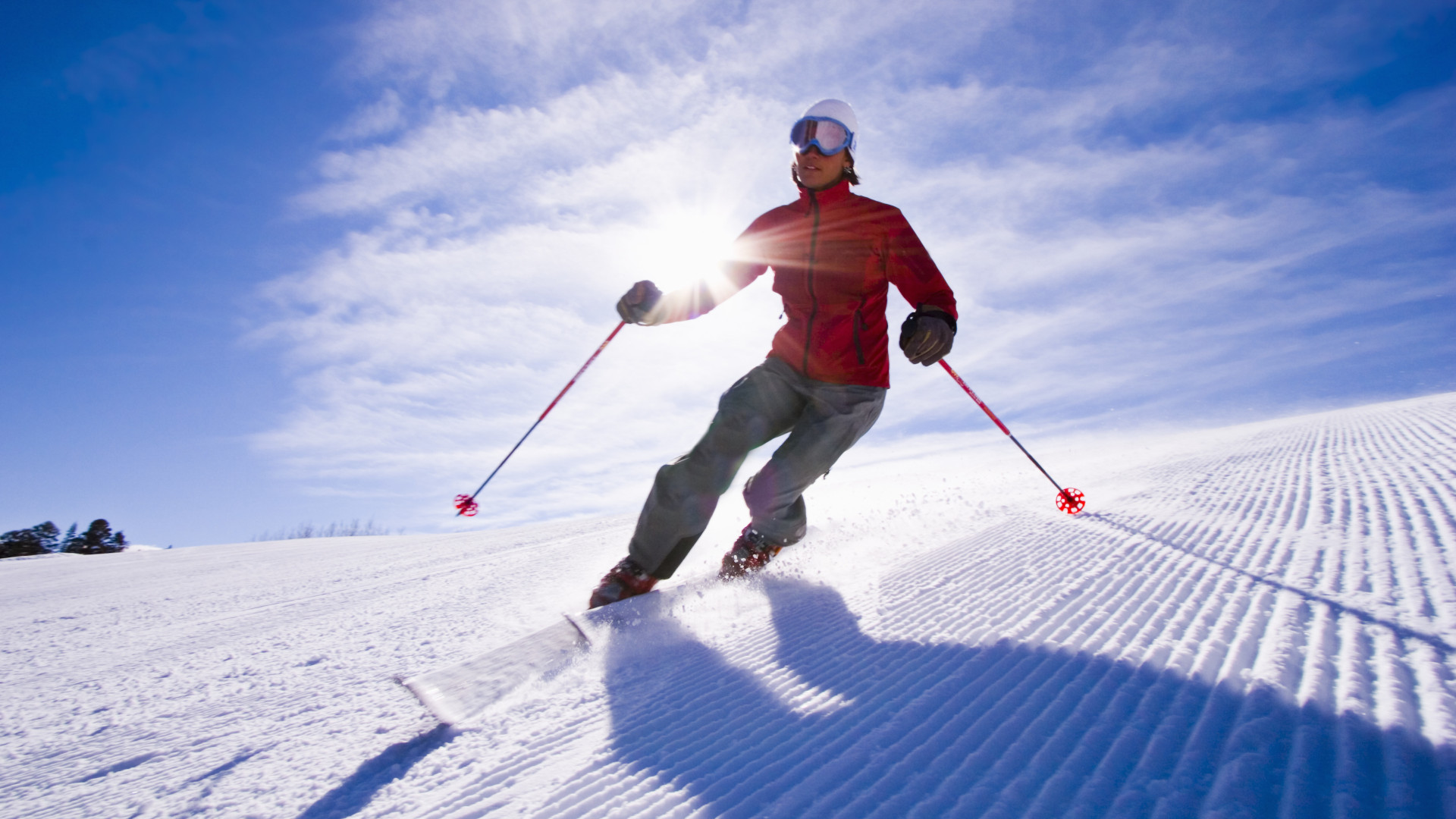
11. Start with groomers
A lot of the best skiing is to be done on intermediate runs and powder days, yes, but initially you’ll have more fun on the bunny slope and beginner runs that are groomed. Choppy, deep snow is a whole different ball game and tosses you around a bit when you’re not properly in control of your skis, so either skip the powder days altogether or stay on groomers, and work on your technique to begin with. Both the resort website and on-site boards will indicate which runs are groomed and which are not, and you can tell because the snow looks like corduroy.
12. Understand trail symbols
Not sure how you’ll know which is a beginner run? Ski runs will be well signposted, you just need to know how to understand the trail symbols on ski runs. In North America, look for green circles which indicate easy runs and steer clear of black diamonds as these are the most difficult. Remember that easy runs won’t be uniform across all resorts – they’re just the easiest runs on that particular resort – so do your research to find out if your resort is beginner friendly. Cat tracks, which are service roads in the summer, usually offer easy skiing and traversing.
Check out a map of the mountain before loading a chairlift to make sure that lift actually serves some beginner terrain, and look again at the top of the lift so you have an idea of what runs you’re looking for.
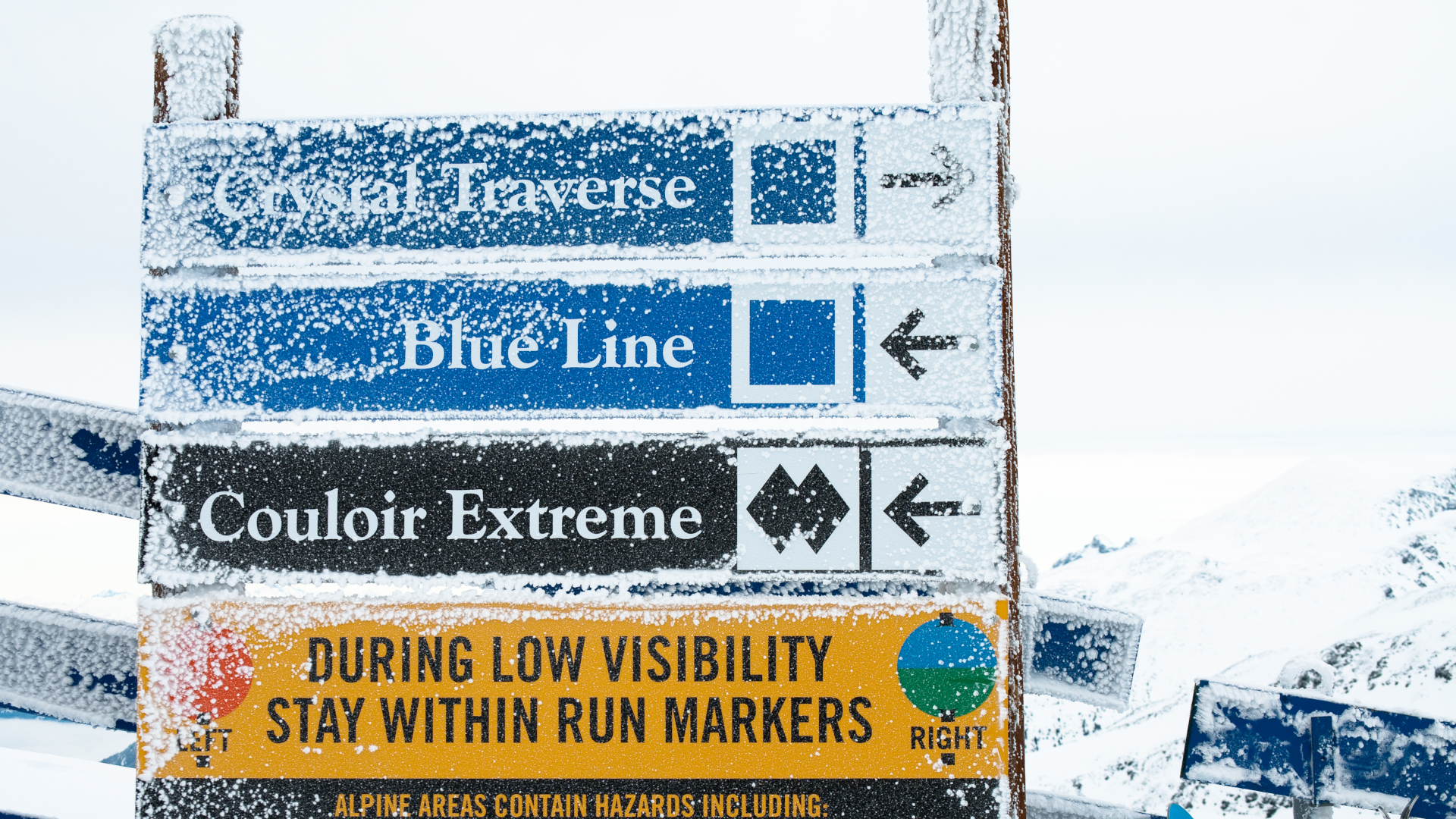
13. Practice the basics
Once you get on the hill, practice these basics from your ski lesson:
- Keep your weight forward and don’t sit in the back seat.
- Focus on weighting your outside ski to turn.
- Keep your gaze forward rather than down.
- Try to keep your chest and shoulders facing downhill and turn from your hips.
14. Ski with people you trust
You’ll often hear that it’s helpful to ski with people who are better than you, and there’s a lot of truth in that. They can answer your questions, give you tips and help keep you safe – but only if they’re responsible skiers to begin with. Accidents can happen when novice skiers follow their experienced friends into terrain that’s outside of their skill level, so make sure you go out with friends who you trust to keep you safe.
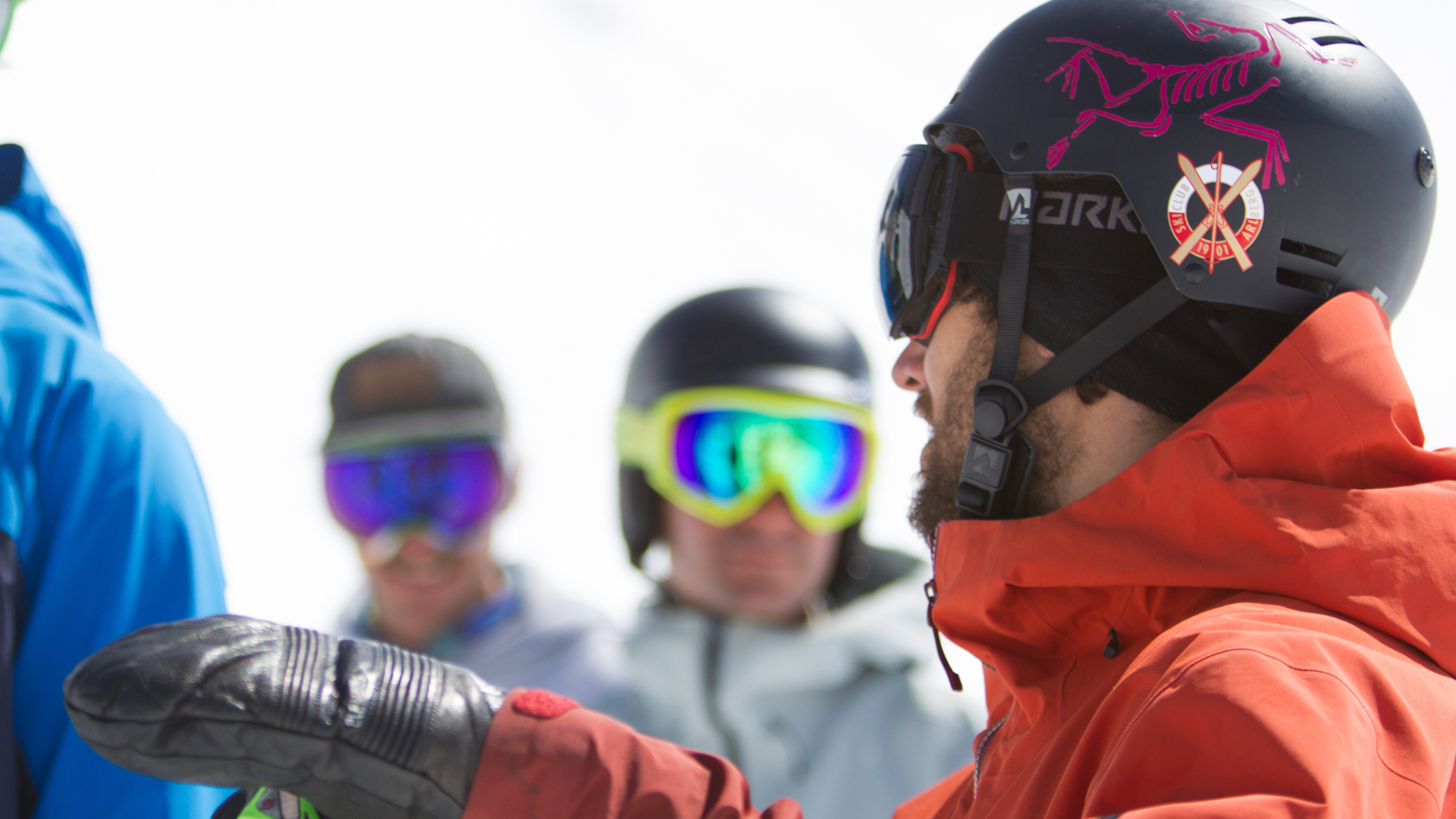
15. Learn how to carry skis
For a lot of us, the most stressful part of skiing isn’t the actual zooming downhill or riding a precariously narrow chairlift over a ravine, but carrying your skis through the village without dropping them, knocking someone out, or otherwise looking like a Jerry. Read up on how to carry skis and practice it (preferably while wearing ski boots) before you set off. There are a few techniques but the best is usually to carry both skis over one shoulder and your poles in the other hand.
16. Practice good sun protection
Nothing screams 'novice skier!' like walking into the bar for après with goggle burn, meaning a bright red face except for where your ski goggles were. Not only do you look silly, sunburn is dangerous for your precious skin. You might not think of practicing sun protection for winter sports, but you can still get a sunburn in winter. Though east coast skiing might involve a lot of gloomy days, if you’re anywhere out west, the chances are you’ll be getting a double dose of UV rays – once from the sun and a second time reflected off the snow. Unless it’s a blizzard day, wear sunscreen, carry Chapstick with SPF, cover up as much skin as possible and make sure you choose ski goggles with polarized lenses to reduce glare.
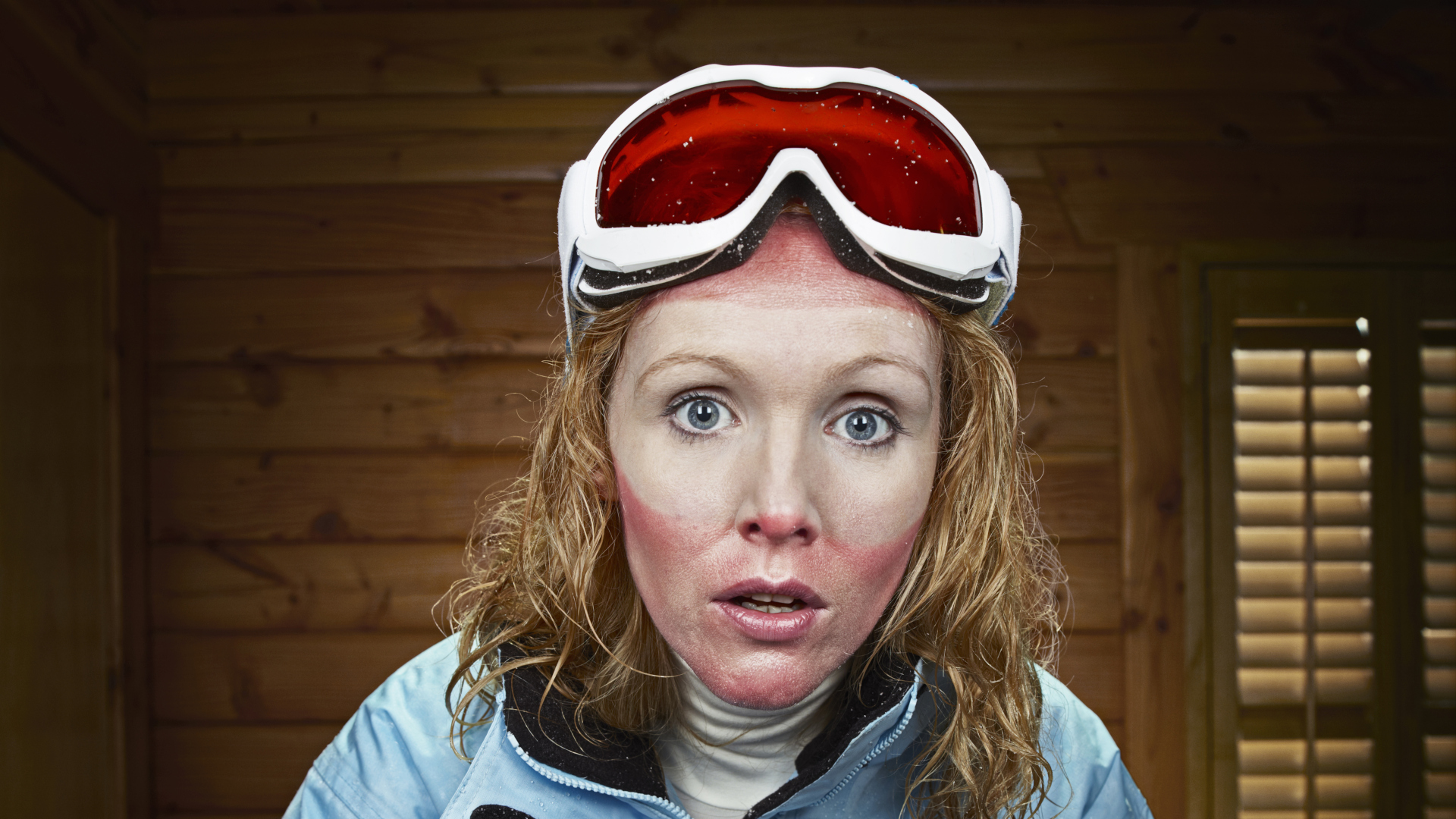
17. Stop before you need to
Skiing is a blast and it’s also really expensive, so the chances are you’ll want to get as many runs in each day as you can. That said, it’s well-known among skiers that most accidents happen on the last run of the day, when you’re tired and sacrificing technique just to get down the hill. Skiing is much harder work for beginners, so try not to get to the point of exhaustion. Take breaks and be honest with yourself when you get tired. If you find yourself at the top of the mountain and too tired to ski down safely, don’t be afraid to ride the chairlift down – some obnoxious locals might laugh at you but it’s far better than ending up in the emergency room. Plus you’re wearing a ski mask so no one will recognize you as The Downloader once you’re safely down at the lodge with your feet up and a tasty beverage in hand.
18. Get insurance
Skiing is risky business. If you’re traveling to a foreign country for a ski trip, make sure you carry travelers’ insurance that covers skiing so you don’t end up with a horrific medical bill, and if you’re an American skiing in America, make sure your health insurance will cover skiing accidents.
- Best ski gloves: keep your hands warm and comfortable on the slopes
Julia Clarke is a staff writer for Advnture.com and the author of the book Restorative Yoga for Beginners. She loves to explore mountains on foot, bike, skis and belay and then recover on the the yoga mat. Julia graduated with a degree in journalism in 2004 and spent eight years working as a radio presenter in Kansas City, Vermont, Boston and New York City before discovering the joys of the Rocky Mountains. She then detoured west to Colorado and enjoyed 11 years teaching yoga in Vail before returning to her hometown of Glasgow, Scotland in 2020 to focus on family and writing.

